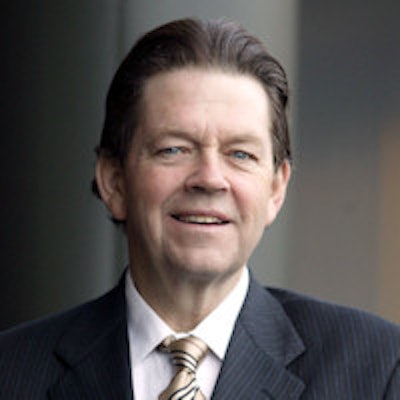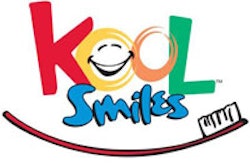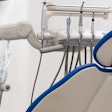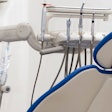
Back in 2012, I delved into a topic of utmost importance and surprising depth: children's dental healthcare. For years, many dentists chose not to treat Medicaid patients. From an economic point of view, it was really no surprise; providers willing to treat the state's most vulnerable patients faced prohibitively low reimbursement rates, while also being asked to bear prohibitively high administrative costs. As a result, many low-income children simply didn't receive the dental care they needed.
Given the life-long health consequences of poor dental health -- as well as the rising costs associated with expensive emergency room visits for untreated tooth decay -- Texas decided to act in 2007, raising Medicaid reimbursement rates to incentivize dentists to serve Medicaid patients. While many dentists continued to avoid low-income populations, something incredible took hold. That is, American entrepreneurs provided a free-market solution to a public health problem.
 Arthur Laffer, PhD.
Arthur Laffer, PhD.Specifically, dental practices supported by dental service organizations (DSOs) began opening their doors to Medicaid patients. They were able to do so because DSOs tapped into economies of scale and centralized the nonclinical, administrative aspects of running a dental practice. This made it possible for DSO-affiliated dentists to focus exclusively on treating patients, saving them time and money. Higher reimbursement rates coupled with lower administrative costs provided by DSO affiliation allowed more dental practices to serve traditionally overlooked, low-income patients.
For the omniscient observer, the DSO model appeared to be working -- providing kids with dental services and stemming the tide of dangerous tooth decay, all in a cost-effective and responsible way. Yet, despite the patient benefits and expanded access to care, DSOs drew unrelenting attacks.
Critics claimed that profit motives would lead to overutilization, that is, that DSO-affiliated dentists would perform unnecessary services to maximize government reimbursement. These claims were the impetus for my analysis of Texas Medicaid data five years ago, and they proved to be almost entirely false.
In my study, I analyzed every single Medicaid claim paid for by the state of Texas in fiscal year 2011, specifically focusing on Kool Smiles, the nation's largest DSO serving children on Medicaid. I found that the dentists affiliated with Kool Smiles performed 8.24 procedures per patient, versus 12.39 procedures per patient at non-DSOs. Moreover, the cost per patient per year was $345.45 at Kool Smiles offices and $483.89 at other DSO-supported clinics in the state, compared with $711.54 for non-DSO dental offices.
Put simply, DSO-supported clinics performed fewer services than non-DSO clinics, and they provided these services at significantly lower cost. These findings were significant not only for patients but also taxpayers on the hook for government bills.
Fast forward to 2016, and much of the dental community has yet to fully embrace DSOs. However, new research continues to reinforce the clear upsides of this innovative care delivery model.
According to a new study by Dobson DaVanzo Associates, which provides an in-depth comparison of Kool Smiles utilization and Medicaid expenditures across seven states, including Texas, the DSO model continues to be incredibly successful in providing care to Medicaid patient populations at lower costs.
Overall, Kool Smiles performed 25% fewer procedures per patient per year than other Medicaid providers in Texas, resulting in 37% lower Medicaid expenditures per patient per month. Indeed, average monthly per-patient Medicaid expenditures among Texas Kool Smiles providers averaged $12.27, compared with $19.34 for all other Medicaid dental providers.
Taking the data analysis a step further, Dobson DaVanzo calculated that if all Medicaid dental providers in Texas were to apply Kool Smiles protocols and utilization rates, the savings to the state would be more than $235 million annually. Not only does the DSO model appear to be working in Texas, but the evidence warrants that the DSO model be encouraged on an even larger scale. Dobson DaVanzo estimates that if all Medicaid dental providers in the seven states for which analysis was conducted were to apply Kool Smiles protocols and utilization rates, Medicaid savings to the states would total more than $556 million per year.
Goodness knows that those perpetrating fraud against government services for the poor need to be brought to justice, but just about all the data indicate no evidence of overutilization of services by DSO-supported Medicaid dentists. In fact, the data show just the opposite. Study after study of Medicaid claims data serve to confirm what was apparent four years ago: DSOs succeed in providing cost-effective care to a patient population desperately in need of dental services.
While change isn't always easy, especially in something as firmly rooted as healthcare, we need to move beyond the status quo. Now, more than ever, policymakers across the country must fully embrace a free market model that encourages efficiency and benefits patients and taxpayers in the process.
This essay originally appeared in the Austin American-Statesman. DrBicuspid.com is grateful to the Laffer Center for the right to reprint.
Arthur Laffer, PhD, is known as the "Father of Supply-Side Economics." He was a member of President Ronald Reagan's Economic Policy Advisory Board from 1981-1989. He is the founder and chairman of Laffer Associates in Nashville, TN, an institutional economic research and consulting firm, as well as Laffer Invesments. For more information, visit the Laffer Center website.
The comments and observations expressed herein do not necessarily reflect the opinions of DrBicuspid.com, nor should they be construed as an endorsement or admonishment of any particular idea, vendor, or organization.



















